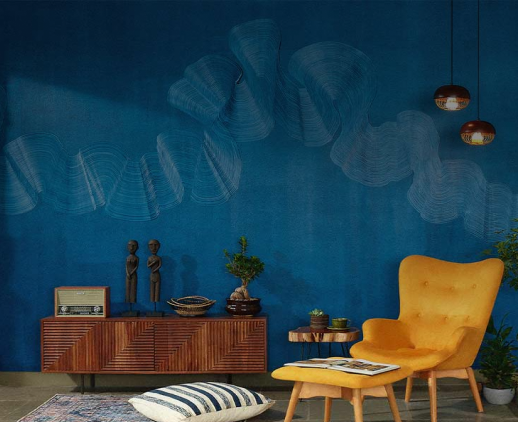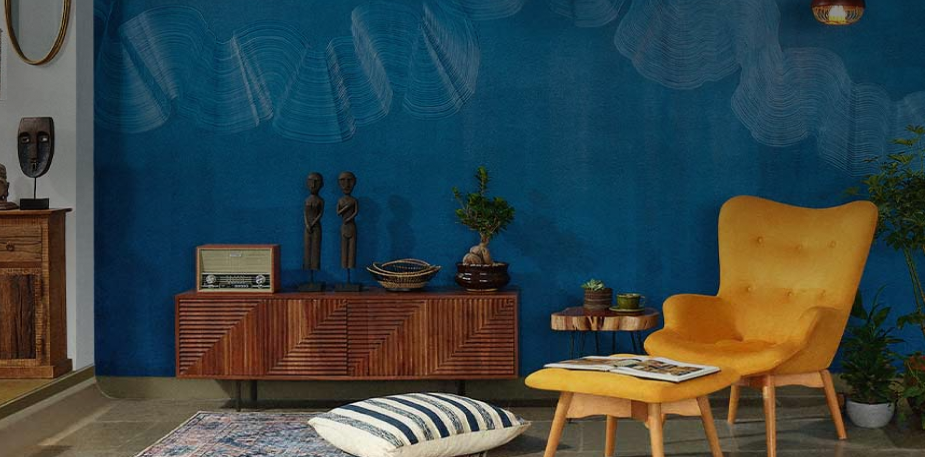Get your home interior design budget estimate
A home for three in the Kerala Modern style interior design

The house sits on just four cents of land on Ravipuram road, parallel to MG Road, the main street of Kochi, Kerala’s commercial capital. It was built in the early 1960s by my husband Sreejith Jeevan’s late paternal grandparents, Mary John and P.C. John. Appachan, his grandfather, ran their business on Cloth Bazaar road, in the midst of the Ernakulam market, while Ammachi, his grandmother, worked at the post-office. They designed and created a home divided into two blocks within the same compound. Today, one of these buildings contain our entire work-from-home universe, with the home also functioning as a workspace for my film production company, Curiouser, while the former garage has turned into a store for Rouka, my husband’s clothing label.
Appachan and Ammachi planted all the trees and creepers around the compound, many of which are around even today. Of the ones still standing, the two large mango trees and a njara (wild malabar plum tree) were Appachan’s favourites. The jasmine climber, flame vine, and a garlic vine with a purple flower were Ammachi’s pet ones. She passed away in 2005, but that jasmine always blooms on her birthday.
In every possible way, we are today reaping the benefits of our grandparents’ foresight. From the way, they created a live-and-work space, to the plants, and even some of the furniture, fragments of their wisdom hang in the air, guiding the decisions we make today about the way we live. Ravipuram road is now very busy with heavy traffic and buildings in close quarters; the two mango trees that flank us on the right and left give us privacy and take on a lot of dust, not to mention the yearly harvest of delicious mangoes. The purple flower plant forms a pretty canopy over our back-gate, and when it blooms it is an indicator that a heavy shower will follow.
A Common Thread
Both Sreejith and I graduated from the National Institute of Design in Ahmedabad, which opened up the worlds of design and craft for us. It was there we explored not just our respective disciplines—Textile Design for him and Film for me—but the place that taught us to freely imbibe other disciplines as well. Then there’s our aesthetic connection to Kerala itself and its microcultures and ideas. Sreejith set up the Rouka label and studio to reflect a tropical minimal aesthetic. Its most visible spatial representation in the store and our home.
As far as spaces go, at 1,600 sq. ft, the two-storey-plus-terrace house is not extremely large, so we’ve had to harness both a Mary Poppins-like spirit of inventiveness and Marie Kondo’s discipline. It was a lesson in small space living, and an exercise in adapting our style to match a multi-functional, specific space that works to the lifestyle of two working parents and our energetic three-year-old son, Spandan. We had to curate a lot of our things; give away some, rework others. Hoarding was not an option, and whatever was kept had to have the quality of multifunctionality.
You enter the home at the front door into the living room, and the ground floor opens to office space and a stock room with a passage to the store out front. Of the four bedrooms on the first floor, one became the kitchen and the other was turned into Spandan’s play-room (with a balcony), while two remain the master bedroom and a guest bedroom with attached bathrooms. A small rectangular foyer with a balcony was converted into a dining space. A stairway runs all the way up to the terrace, connecting everything up.

The living room on the ground floor has been decorated with personal items that have a resonance for both Anoodha and Sreejith.
Kerala Morden Eclectic
One of the reasons we were able to adapt to this 60s modernist and spare Kerala home is because this aesthetic really speaks to who we are. Kerala’s modern design history is very much about being aesthetically frugal and rich in the quality of material but deeply philosophical. For us, it is the only way to be. Living sustainably and syncing your needs with Kerala—the land, the weather, the urban landscape, is very much an essential way of the Kerala lifestyle. It is also the nature of Kochi as a city. It is as traditional as it is global. You can get a delicious sadhya but also artisanal cheese, you’ll see an old tharavadu, traditional Kerala homestead, and a swanky apartment side by side on the same road. We’ve also taken the wisdom and follies of the old and figured it out in the present, moulding our lived experience into context—living with the old, in a new way.

The stairway goes all the way up to the terrace.

The dresser belonged to Sreejith’s grandparents, and was revitalised for the house.

Anoodha and Sreejith’s love of fabrics and textures are at play all over the house.
These are the specific changes we made to the house:
1. Floors: We retained the mosaic and red-oxide floors. Both are easy to clean and keep the home cool.
2. Doors and windows: The teak-wood doors and windows were retained, but we painted it black to be more contemporary and serve a nice contrast to the white walls. In typical Kerala fashion, we created a few wall murals with red-oxide coloured paint for a bit of drama. All doors and windows have mosquito nets to keep the insects, pests, bats, civet cats, (sometimes) snakes, and birds to the outdoors.
3. Artworks: We played around with the existing nails on the walls and placed photographs, paintings, or awards and artworks—all things personal and relevant. All the artworks are made/painted by one of the three of us and our quirky extensions of the elements around us.
4. Furniture and accessories: Most of our furniture is pre-owned pieces from our families. We used fabrics that are part of the Indian textile family, especially Kerala handloom, and reminiscent of a Scandinavian meets the modern aesthetic.
5. Material: Mosaic, oxide, wood, metal, concrete, and granite in all its rustic forms have been around the house. The selection was based on ease of maintenance, and climate-compatibility, plus local availability. The weather and child also mandated easily wipeable surfaces and raw finishes

Get Started with your interior design journey with us!
Speak to our design professionals
What’s the status of your home possession?
What’s the condition of your home/space?
Will you be living in your space during the renovation?
 Previous Question
Previous Question
Is your interior design budget over 4 lakhs?
 Previous Question
Previous Question
Book next available appointment slots with our experts!
Please Select Date and Day
 Previous Question
Previous Question

Something went wrong!
We were unable to receive your details. Please try submitting them again.

Appointment Scheduled!
Thank you for giving an opportunity to Asian Paints Beautiful Homes Service! Our Customer Experience Specialist will get in touch with you soon.
Appointment Date & time
Thank You!
Our team will contact you for further details.
What’s the status of your home possession?
What’s the condition of your home/space?
Will you be living in your space during the renovation ?
 Previous Question
Previous Question
Is your interior design budget over 4 lakhs?
 Previous Question
Previous Question
Book next available appointment slots with our experts!
DEC 2023
Please Select Date and Day
 Previous Question
Previous Question

Something went wrong!
We were unable to receive your details. Please try submitting them again.

Appointment Scheduled!
Thank you for giving an opportunity to Asian Paints Beautiful Homes Service! Our Customer Experience Specialist will get in touch with you soon.
Appointment Date & time
17 Oct 23, 03.00PM - 04.00PM



















































